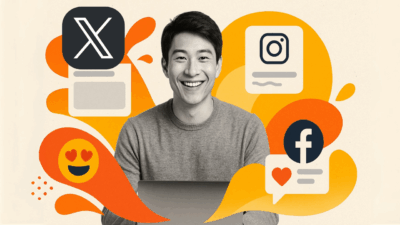In today’s digital age, businesses are overwhelmed with the ongoing challenge of finding, managing, and sharing valuable content with their audience. The web is full of information, and it is literally impossible to track manually all things concerning your business or brand. That is where content aggregator websites step in – powerful tools that can revolutionize the way your business discovers, collects, and uses web-based data.
Content aggregators have evolved significantly from simple RSS feed collectors to sophisticated platforms that are capable of gathering, categorizing, and displaying content from multiple sources in a single place. Whether you need to monitor brand mentions, gather industry news, or display user-generated content, a content aggregator can make it easier besides saving time and effort.

Introduction to Content Aggregation
Content aggregation means gathering and assembling content from several different sources into one place so that it is easily accessible and consumable by the users. This can be done with the help of content aggregation tools, which make the creation and delivery of content quite easy. Content aggregation helps companies and individuals to provide their target audience with helpful content, better their search engine rankings, and increase their web visibility. Content aggregation is versatile and can be applied across various industries, including news, social media, and marketing, to name a few. Whether you’re looking to stay updated with industry news, monitor social media trends, or enhance your marketing strategy, content aggregation can be a game-changer.
What is a Content Aggregator?
A content aggregator is a website or software that automatically gathers content from other online sources on targeted subjects and presents all the content easily in one place. Aggregation is achieved by algorithms, RSS feeds, or API integrations to search for and bring together related content from around the web.
Content aggregators have a number of business applications, including automatically collecting news articles about your company, consolidating social media status updates using a specific hashtag, collecting blog posts about industry trends, consolidating video content about your products, tracking the latest advancements in your field, and systematically collecting information on competitors’ marketing campaigns.
Unlike content creation, in which you’re creating new content, aggregation is concerned with the collecting of already existing content. Aggregation is different from content curation, which is the more edited and selective hand-picking and showcasing of content with editorial discretion. Aggregation is done largely automatically, although most sites now provide moderation tools to help ensure quality control.
How Content Aggregators Collect Information
Content aggregators use a number of technical methods to efficiently collect information. API Integration provides direct connections to platform APIs like Twitter, YouTube, or news organizations. Web Scraping provides automated data retrieval from websites (with authorization). RSS Parsing reads standardized feeds from blogs and news sites. User Submissions provide community members the ability to submit appropriate content. Email Digests convert newsletter content into aggregated collections.
These collection techniques can be tailored to target specific topics, so you only collect the most relevant content for your business purposes. Some content aggregators also enable users to manually approve social media content before it shows up on their site, maintaining quality and establishing brand trust by publishing thoughtfully curated content to site visitors.
Types of Content Aggregator Sites
Content aggregators come in various forms, each designed to serve specific needs and content types by pulling information from multiple sites. Understanding these different categories can help you identify which type of aggregator will best serve your business goals.
Social Media Aggregators
Social media aggregators, like Juicer, specialize in collecting social media feeds from platforms such as Facebook, Twitter, Instagram, and LinkedIn. These tools can aggregate content by specific social media accounts, hashtags or keywords, mentions of your brand, and user-generated content. Social media aggregators are particularly valuable for businesses looking to display social proof on their websites or create engaging social walls at events.
News Aggregators
News aggregators gather news and articles from various online publications and news sources. They typically include filtering capabilities to allow users to search for applicable stories from industry-specific news, geographic location, topic similarity, and publication source. For example, Google News aggregates top news stories for users based on what they have searched for before and where they are located, providing a personalized news experience. These aggregators can help businesses stay current with industry news and competitor activity without needing to follow dozens of news sites.
To get the most out of breaking news content, employ tactics such as real-time tracking for current industry news, monitoring competitor releases, finding developing stories before they become mainstream, merging global and local news sources for comprehensive coverage, and using multiple sources to confirm accuracy before releasing. By doing so, your company can become a valued source of timely, relevant news within your industry.
Blog and RSS Feed Aggregators
Blog aggregators are built for collecting and organizing blog posts and other articles throughout the web, helping businesses identify industry thought leadership, monitor competitor content, find guest blogging opportunities, and research trending topics. Some of the most widely used examples include Feedly, AllTop, and Blog Engage.
RSS (Really Simple Syndication) feed aggregators represent the first type of content aggregation. RSS aggregators gather content from RSS-enabled sites, enabling visitors to monitor updates from various sites in a single location, filter content, save articles for later reading, and get alerts for new content. Less graphics-oriented than some types of aggregators, RSS aggregators are still a solid way of monitoring content.
Video and Media Aggregators
These niche sites specialize in collecting video and audio materials from websites like YouTube, Vimeo, SoundCloud, and podcast channels. Media aggregators help businesses collect video endorsements or customer testimonials, focusing on product showcase, collecting industry webinars or presentations, and dispersing supporting audio content. Media aggregators also enable brands to integrate visual material into online displays at events and on web pages, hence enhancing engagement and trust.
Content Aggregation Tools
Content aggregation tools are software applications designed to help users collect, organize, and distribute content from multiple sources. These tools can aggregate content from social media platforms, news sites, blogs, and other online sources, making it easier to manage and share valuable information. Popular content aggregation tools include social media aggregators, RSS feed readers, and content curation platforms. By using these tools, users can save time and effort in content creation and distribution, ensuring that the content they share is high-quality and relevant. Whether you’re looking to aggregate content for a blog, social media, or a news site, these tools can significantly enhance your content strategy.
Benefits of Using Content Aggregator Sites for Business
Implementing a content aggregator into your business strategy offers numerous advantages that can enhance your marketing efforts, improve customer engagement, and provide valuable insights. One of the key benefits is that it saves time by automating content collection and reducing the need for manual search, allowing your team to focus more on analysis and strategy.
| Benefit | Description | Business Impact |
|---|---|---|
| Time and Resource Efficiency | Automates content collection, reducing manual search time | Allows teams to focus on analysis rather than discovery |
| Enhanced Website Engagement | Adds fresh, dynamic content to your site | Increases time on site and encourages return visits |
| SEO Advantages | Increases content frequency and keyword diversity | Improves search rankings and topical authority |
| Social Proof and Trust | Displays authentic user content and mentions | Builds credibility and third-party validation |
| Brand Intelligence | Monitors mentions and competitor activity | Informs strategic decisions and marketing initiatives |
Effortlessly optimized content aggregation can significantly increase your search visibility. When search engines see your site consistently publishing high-quality content for a specific topics, search engines recognize your site as authoritative sites for those niches. Topically targeted content aggregation strategy sends good topical relevance signals that assist in ranking for industry-specific keywords.
According to SEO experts, websites which are regularly updated with new and useful content perform better in search engines. Content aggregators provide such a continuous flow of updates without having to constantly create content manually.
How to Use Content Aggregators for Business
To maximize the benefits of content aggregation, businesses should develop a strategic approach that aligns with their specific goals and audience needs. By using content aggregators, businesses can curate content to offer a unique perspective while linking to original sources, enhancing social media engagement and efficiency in content creation.
Strategic Implementation Process
When implementing a content aggregator, consider the types of content you want to collect (social, news, blogs, etc.), required integration capabilities with your existing systems, customization options to match your brand, moderation features to maintain quality, and cost and scalability as your needs grow. For social media content specifically, Juicer offers a comprehensive solution that integrates with 15+ social networks and provides extensive customization options. Integrating user-generated content into your own website can enhance brand trust and engagement.
While aggregation is automated, a thoughtful curation plan will ensure the content is relevant to your viewers. Set clear goals for your aggregated content, establish filtering criteria for sources and topics, carry out moderation procedures for assessing content, plan aggregated content inclusion into original work, and implement regular checks to refresh your procedure.
To effectively aggregate content around specific topics, conduct rigorous keyword research to identify the most relevant terms in your domain, focus on high-authority sources for that specific topic, create a taxonomy to organize topic-specific content, create notifications for creating subtopics, use AI to remove irrelevant content, and group related content to create comprehensive resource hubs. This focused approach ensures your content serves specific audience needs rather than collecting widely related but ultimately irrelevant information.
Content aggregators not only collect data but may also enable distribution of the same through embedded feeds on relevant website pages, e-mail newsletters comprising aggregated material, social media, and display of content feeds at physical locations or events. Track the performance of your aggregated content to optimize results by measuring engagement metrics, identifying valuable content sources, adjusting filtering criteria based on audience response, and testing different display formats and placements.
Content Curation
Content curation involves manually finding and picking content from various sources to present a curated set of valuable and relevant information. Content curation tools can assist users in discovering, organizing, and sharing content with the target audience, and ensuring that the shared content is of high quality, relevant, and interesting. Through content curation, companies and individuals can position themselves as thought leaders in their industry and gain the trust of their target audience. Content curation takes content aggregation to the next level by involving the human touch, such that the aggregated content is not just complete but also insightful and meaningful.
Practical Applications for Different Industries
Content aggregation solutions can be customized to meet the particular industry requirements and goals. E-commerce sites can feature user-generated product images, consolidate customer reviews, showcase products in real-life settings, and gather unboxing videos. Platforms such as Yotpo and Olapic allow companies to utilize user-generated content on marketing channels, fostering brand awareness and engagement. Media and publishing firms can keep tabs on competing publications, follow trending stories, find content for syndication, and augment original reporting with aggregated background information.
Events and hospitality businesses can build social walls around event hashtags, showcase visitor experiences, curate news and events on a local scale, and gather event feedback. Schools can curate student-generated content, track research publications, curate industry news for a specific program, and feature alumni success stories. Professional services firms can showcase industry expertise through the curation of relevant news, track client mentions, showcase project outcomes submitted by clients, and curate employee-written thought leadership.
Brands that Use Content Aggregation
Several brands employ content aggregation to supplement their content marketing efforts and offer their target market valuable information. Some of these brands are news outlets, social media platforms, and marketing agencies. These brands utilize content aggregation tools to gather, curate, and distribute content from various sources and create curated sets of valuable and pertinent information. Through content aggregation, these brands are able to enhance their search engine ranking, expand their online visibility, and build credibility with their target audience. Content aggregation enables these brands to keep up with industry trends, track competitor activity, and provide timely, topical content to their audience.
Juicer: The Ultimate Content Aggregator Solution
When it comes to comprehensive content aggregation, particularly for social media, Juicer stands out as a powerful and user-friendly solution. Selecting the right content aggregator involves evaluating its compatibility with existing technology and ensuring it aligns with your business goals.
Key Features and Benefits
Juicer provides several advantages that render it ideal for businesses of any scale. It facilitates multi-source integration with 15+ networks like Facebook, Twitter, Instagram, YouTube, LinkedIn, and Pinterest. Its customization options provide 9 various feed styles with extensive color, font, and layout customization. Moderation controls allow keyword filtering of the content, pre-approval of posts prior to publishing, and removal of unwanted content. The responsive design looks great on any screen with mobile-friendly feeds. Flexible embeddability enables seamless integration in websites, apps, and screens. Integrated analytics permit tracking of performance metrics to optimize content strategy. The curated content is all search engine indexed to provide greater SEO visibility.
The setup process is straightforward: create a free account at Juicer.io, select your social media sources, customize your feed’s appearance, generate the embed code, and paste it into your site where you want the feed to appear. WordPress users benefit from a dedicated plugin that simplifies installation even further. Juicer allows businesses to share curated content with their followers effectively, adding value through individual curation and commentary.
Juicer supports a high degree of customization with various layout types (grid, slider, list), color, font, and spacing customization, update frequency and post display time control, custom CSS for advanced styling, and content filtering by specific parameters.
Flexible pricing plans support varied business requirements with Free (for small businesses in the early stage) to Enterprise (custom from $199/month) plans, with mid-tier Lite ($15/month), Starter ($25/month), and Pro ($99/month) plans. All plans offer core aggregation features, with the upper plans providing more sources, customization, and support.
Best Practices for Effective Content Aggregation
To maximize the value of your content aggregation activities, consider ethical guidelines by attributing sources where necessary, respecting copyright regulations, seeking permission when featuring user content in a highlighted manner, and providing opt-out options to content providers.
Use strict filtering and moderation procedures to ensure quality by instituting keyword filters to block objectionable content, establishing manual review procedures for sensitive topics, crafting clear guidelines for content inclusion or exclusion, and auditing your aggregated content on a continual basis for relevance and quality.
The best content strategies blend aggregation and original content. Employ aggregated content to augment, not substitute for, original content. Provide context and insights to aggregated collections, write original introductions or summaries to aggregated content, and build thought leadership on top of aggregated trends. Offering key takeaways from curated content can significantly improve your content strategies by delivering concentrated and actionable insights to your audience.
Track key metrics to iterate on your aggregation strategy on an ongoing basis by monitoring engagement levels with aggregated content, click-throughs to source sites, time spent on pages with embedded feeds, user feedback on relevance and quality of content, and search engine ranking improvement for target keywords.
Email Marketing with Aggregated Content
Email marketing is an effective means of communicating with and engaging a target audience, and aggregated content can prove to be a useful supplement to email marketing campaigns. Through the utilization of content aggregation tools to find and compile relevant and useful information, users and businesses can create email campaigns and newsletters that are engaging, informative, and pertinent to their target audience. The aggregated content can then be utilized to make social media updates, news stories, and other forms of content that can be shared through email, thereby enabling email marketing campaigns to be more successful. Through the application of aggregated content in email marketing, people and businesses are able to establish trust with their target market, enhance their search engine rankings, and augment their online visibility.
Transform Your Business with Content Aggregation Today
Content aggregator websites offer a powerful solution for businesses overwhelmed by the volume of online content. By automatically collecting relevant information from multiple sources, these tools can save time, enhance your online presence, and provide valuable insights into your industry and audience. Additionally, content aggregators can help businesses reach new audiences by delivering targeted and relevant content, thereby attracting diverse consumer segments.
Whether you’re looking to showcase social proof, monitor brand mentions, or keep up with industry trends, a solution like Juicer can transform how your business interacts with online content. With its comprehensive features, user-friendly interface, and flexible pricing, Juicer stands out as the ideal content aggregation platform for businesses of all sizes.
Ready to harness the power of content aggregation for your business? Get started with Juicer for free today and discover how easily you can aggregate, display, and leverage content from across the web.
Explore Juicer’s Content Solutions:
- How to embed X feeds on your website
- Add Instagram posts and reels to your site
- Display LinkedIn content on your website
- Integrate YouTube videos with your website
- Showcase TikTok videos on your site
- Add Facebook posts to your website
- WordPress social media feed solutions
- Embed social feeds on any platform




